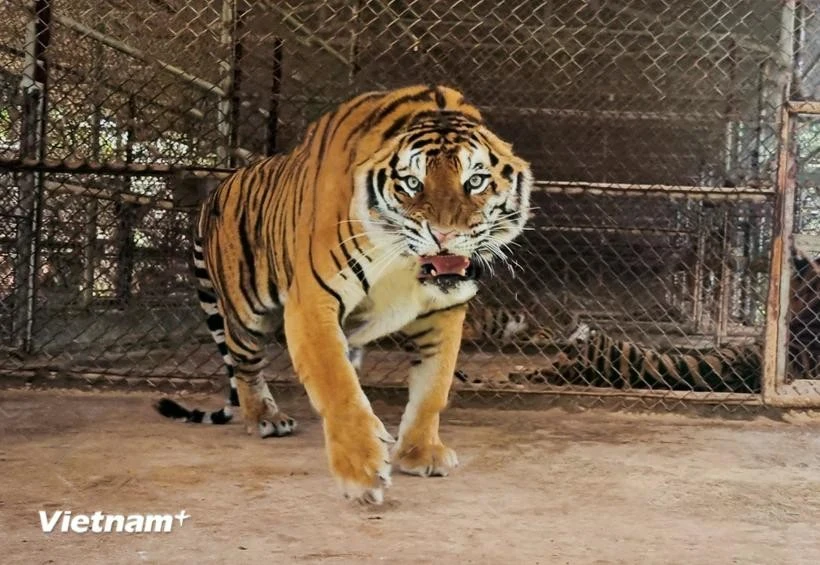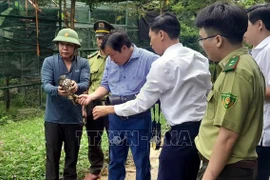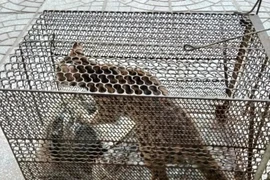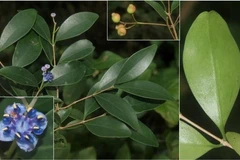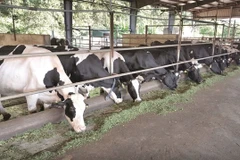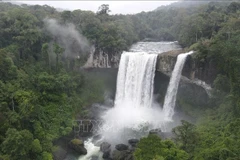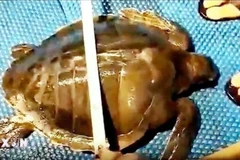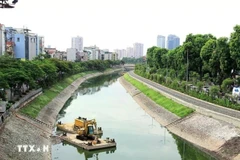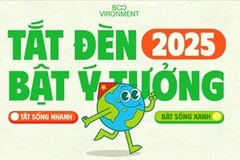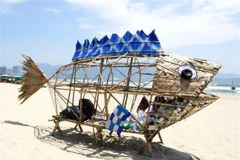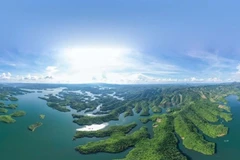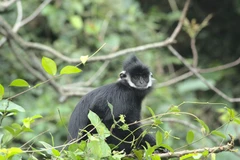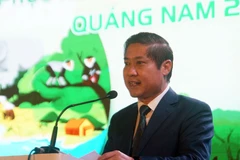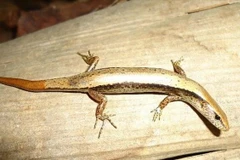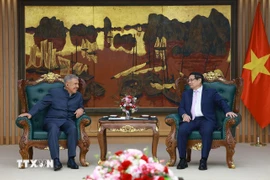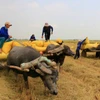Hanoi (VNA) - In a stark testament to environmental devastation, Vietnam's iconic tiger population has seemingly vanished from the wild after 26 years, raising questions about biodiversity loss and conservation efforts.
The Vietnam Red List of Threatened Species and the 2024 Vietnam Red Book, compiled by the Institute of Ecology and Biological Resources, revealed that the last documented photograph of a wild tiger was captured at the Pu Mat National Mat in the central province of Nghe An in 1998, a moment that now seems like a distant memory. Conservation efforts have yielded no trace of tigers despite extensive camera trap surveys. Between 2019 and 2023, the Sustainable Forest Management and Biodiversity Conservation Project (VFBC) funded by the UN Development Programme, conducted camera trap investigations across 21 nature reserves in Vietnam but not a single tiger was detected among millions of captured images.
Scientists believed that tigers have disappeared from the Southeast Asian nation.
The disappearance extends beyond tigers. Saola, scientifically known as Pseudoryx nghetinhensis, an incredibly rare species dubbed the "Asian unicorn," has also become a phantom of Vietnam's forests. First discovered at the Vu Quang National Park in the central province of Ha Tinh in 1992, this mysterious creature has only been photographed a handful of times. The last confirmed image was taken in Quang Nam province in 2013.
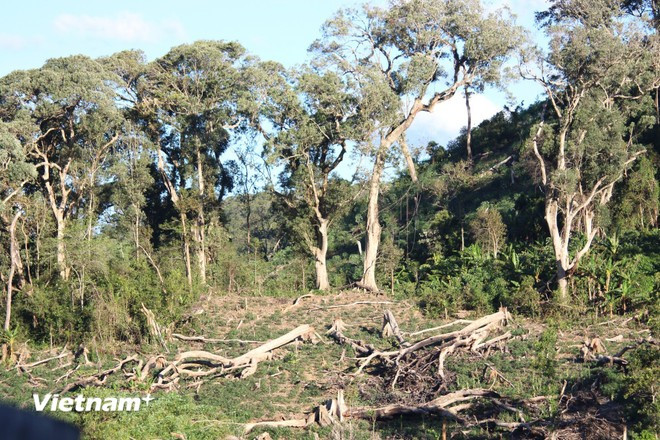
Saola has an extraordinarily limited habitat confined to the narrow Truong Son mountain range spanning Vietnam and Laos. In October 1998, researchers achieved a breakthrough by photographing a Saola at the Pu Mat National Park in the central province of Nghe An. Yet the rarity of this encounter was underscored by the subsequent 15-year gap before another camera trap managed to capture a saola image, this time in the central province of Quang Nam. Since that 2013 sighting, not a single additional photograph has emerged.
Jungle cats have not been sighted in the country over the past 40 years. Last seen in 1978 in K’Bang district, the Central Highlands province of Gia Lai, the mammals have fallen victim to degrading living conditions and hunting.
However, scientists remain optimistic as historical precedent offers a glimmer of hope, with silver-backed chevrotain (Tragulus versicolour), another rare species of mouse deer, was rediscovered in 2018 after years of being considered lost. It was seen at the Nui Chua National Park in the south central province of Ninh Thuan and has become the symbol of the park. Besides, scientists also discovered various rare animals at the Nui Chua National Park like peacock-pheasant (Polyplectron germaini), siamese fireback (Lopura diardi), yellow-bellied weasel (Mustela kathiah), bar-backed partridge (Arborophila brunneopectus), and blue-winged Pitta Pitta moluccensis.
The story of Vietnam's vanishing wildlife is more than a conservation challenge - it is a profound narrative of ecological transformation, urging immediate and comprehensive action to protect the remaining fragments of the country's natural heritage. Vietnam confirmed its strong commitment to protect tigers and implement its responsibility for biodiversity conservation, within the framework of CITES conventions, the Kunming-Montreal Global Biodiversity Framework, to prevent and reverse biodiversity loss and meet the United Nations Development Goals (UNDGs). Even though tigers have not been recorded in the wild for years, the country has issued a ban on trading wild tiger products. Illegal hunting, trading and farming is prosecuted according to the 2017 Penal Code. A national action on tiger conservation (2014-2022) was also launched to protect the species.
Tigers are one of the few species whose survival and recovery are so thoroughly intertwined with many of societies’ greatest challenges, including biodiversity decline, development and health concerns.
They are deeply embedded in the culture and beliefs of many countries - a symbol of strength, good luck and power. But in just over a century, the wild tiger population globally has suffered a devastating decline, losing around 97% of their historic range./.
